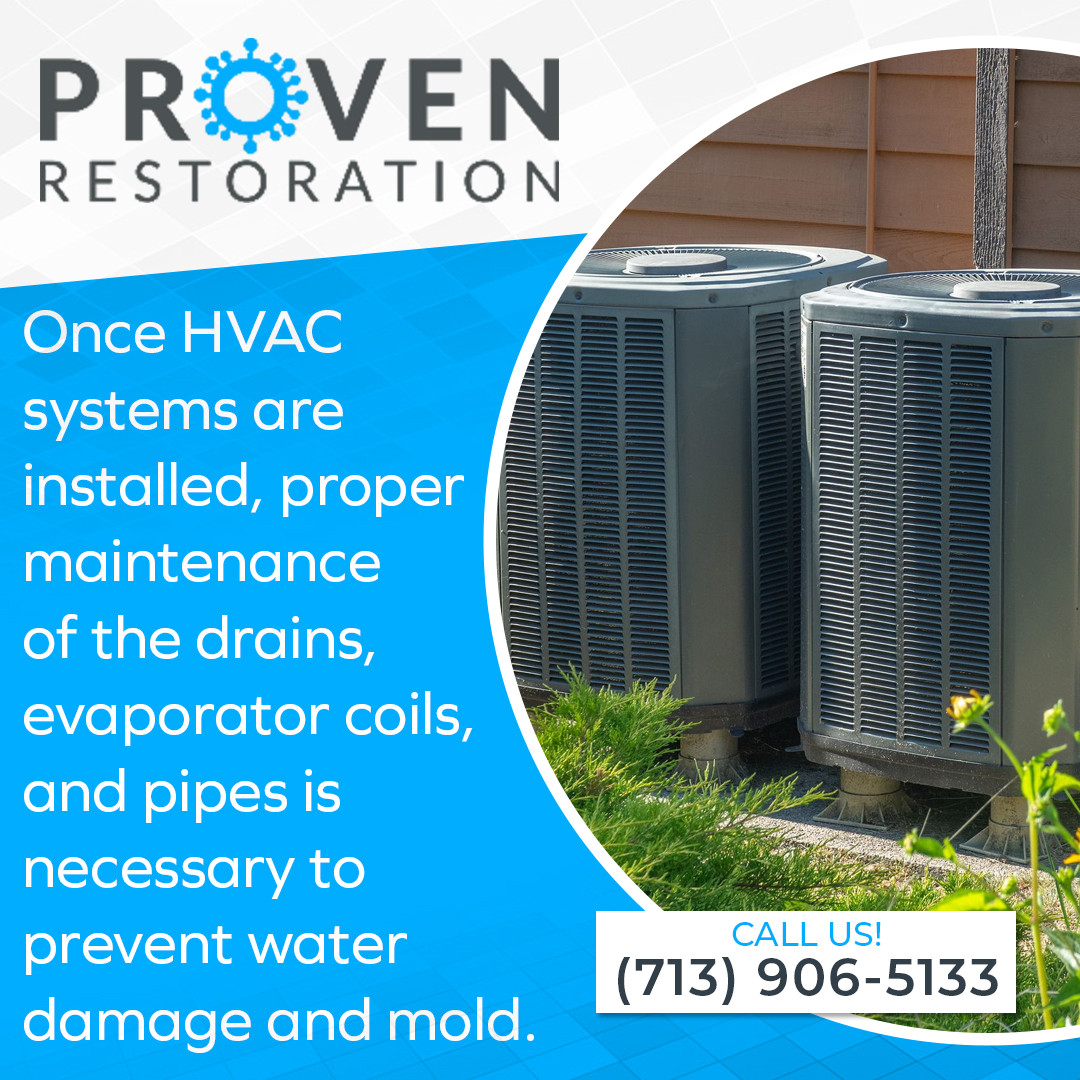Maintaining the temperature and air quality is essential to keep homes comfortable. This is the function of HVAC systems. HVAC system stands for heating, ventilation, and air conditioning system. The system consists of several components like furnaces, air conditioners, heat pumps, ductwork, and thermostats. It warms the home in winter and cools it in summer. It also helps to filter and purify the air so that exposure to allergens, pollutants, and chemicals is reduced.
.jpg)
However, improperly installed or inadequately maintained HVAC systems can lead to problems that affect their energy efficiency and cause water damage and mold growth. In such cases, water removal may be required. Homeowners who need water removal in Kingwood, TX, can contact Proven Restoration LLC. This full-service water damage restoration and reconstruction contractor is insured, bonded, and licensed by the state of Texas. In this article, Proven Restoration explains how choosing the right-sized HVAC system can help to prevent water damage and mold growth.
For the most comfort, best performance, and energy efficiency, choosing an HVAC system of adequate size is key. An HVAC professional or HVAC installation company will know what size HVAC system will meet a home's requirements. But, it is helpful for homeowners to understand what to check when installing an HVAC system. The common causes of water damage and mold growth in buildings are problems with the building envelope (leaking roofs, walls, windows, etc., and improper insulation), plumbing and appliance leaks, sewer backups, and floods. A cause of water damage that may not be obvious initially can be improperly-sized air conditioning systems or inadequately maintained HVAC systems.
Choosing the wrong size of the HVAC system can cause problems. The size of an HVAC system is the rate at which it supplies heating or cooling, not its actual size. Heating size is given in British Thermal Units per hour (BTU/h), and the cooling size is given in tons of cooling; 1 ton of cooling is equal to 12,000 Btu/h, which is the rate of cooling required to freeze one ton of ice at 32 degrees Fahrenheit in one day. The cooling load of a building is made of two parts; the sensible load, which is the temperature of the air, and the latent load, which is the moisture or humidity in the air. An oversized cooling system reduces the temperature quickly and needs to run longer to remove enough moisture from the air. Many people turn down the thermostat when they feel clammy so that the air conditioner runs longer. This increases the utility bill. Water damage and mold growth may occur if an inappropriately sized air conditioner is removing insufficient moisture from the air.
If the HVAC system is of adequate size, it runs long enough to remove excess moisture from the air. The thermostat setting would then need to be at a manageable level, and it is possible to save on the utility bill as lowering the thermostat is not required. Since excess humidity is taken care of, the building is more comfortable without people feeling clammy or mugginess indoors. A system that supplies slightly less than the required tonnage of cooling is better than a system that delivers more than the necessary tonnage.
How To Determine The Correct Size for an HVAC System
How many BTUs a home requires must be estimated. For this, the square footage of the home must be determined. For this, multiply the length times the width of each room in the building, and add them together.
Once the square footage is determined for each room, multiply it by 25 to get the required BTU/h.
In rooms where more people gather, like a dining room, add 400 BTUs for each person expected to use the room regularly.
For every window in the home, an additional one thousand BTUs should be added.
The final figure after all these calculations is the minimum number of BTUs that the HVAC must supply for a cool and comfortable environment with less risk of excess moisture that may necessitate water removal.
Other Factors That Impact The Size of HVAC System
Climate: Warmer or colder climates may need HVAC systems to run for longer.
Home Exterior: The amount of heat reflected or absorbed by buildings depends on their exterior color and type of material. Lighter-colored buildings reflect heat from the sun, while brick buildings retain heat for longer. Vinyl siding and insulation forms reduce heat loss in winter and keep heat out in summer. Well-insulated homes improve the energy efficiency of HVAC systems.
Exposure to the sun: Homes that face south or west may need a longer time to cool as they are exposed to more sun in the summer. Homes that face north or east or with plenty of shade are typically cooler in summer because they are less exposed to the sun.
Windows: Windows can lead to energy loss in homes, especially if they are single-pane windows that are less energy efficient. Using energy-efficient windows can lower the tonnage requirement of the AC unit.
Ceiling height: High-ceilinged homes have more volume to cool or heat than homes with standard ceiling height. One or two BTUs may be needed additionally to cool such homes efficiently.
Heat-generating appliances: Rooms like kitchens and laundry rooms that have devices that produce heat will need more BTUs to keep cool.
Ductwork: The HVAC must be compatible with the ductwork of the home. If the ductwork is not of adequate size, it puts more pressure on the HVAC unit. The duct sizing depends on the size of the home, airflow velocity, loss of duct flow pressure, and the static pressure of the HVAC system.
Though HVAC professionals will know how to choose the right sized system, some insight into why it is essential and how it can be done is advantageous. Once HVAC systems are installed, proper maintenance of the drains, evaporator coils, and pipes is necessary to prevent water damage and mold. Lingering musty smells may indicate the presence of moisture in ductwork, which can cause mold growth. Leaks from the HVAC system may be due to a frozen evaporator, a damaged condensation line, or a clogged drain. The resulting water damage can cause mold. The filters should be changed regularly to prevent water damage from the HVAC system. The unit's exterior and condenser must be cleaned to remove accumulated dirt that impairs adequate airflow. Installing a condensation pump will allow water to flow.
.jpg)
If there is any water damage caused by the HVAC system, after rectifying the problem, a water damage restoration specialist can be called for water removal and repair as needed. Proven Restoration LLC offers water damage restoration, including water removal in Kingwood, TX, and nearby areas. They also provide HVAC/duct cleaning services that help remove dirt or debris clogging drains and leading to water damage. Any mold in the HVAC system that impacts air quality can also be removed by HVAC cleaning. Homes and businesses that need mold remediation and water damage restoration, including water removal in Kingwood, TX, can call (713) 906-5133 to get services from Proven Restoration LLC.
































